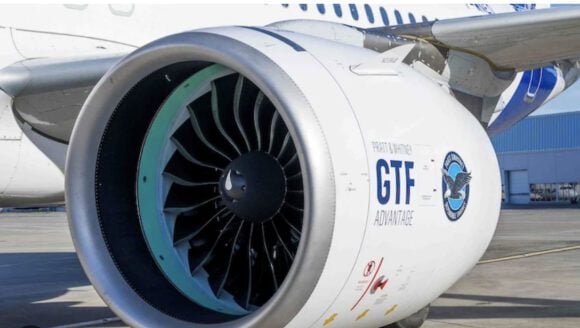Wednesday’s story on engines attracted a lot of attention. And some good comments – so we went back to our data to see what more we could pull out of it. This is what we found.
First our earlier story was looking at aircraft powered by certain engine makers. It gave a reasonable picture, but didn’t count engines. In redoing the chart it occurred to us that we might first want to show how the in-service passenger fleet has changed. In 2000 twins were at 77% of the market and by year end 2014, they were at 95%. That alone tells you a lot about how much better engines have become. The biggest loser has been the tri-engined aircraft which went from 11% to 1%. Quad-engined aircraft declined from 13% to 4%. Our thinking, based on earlier analysis, is that the VLA market is likely to be around 4%. So that number might remain stable.
 Second when we count engines the chart changes – but only marginally. Using the same format as before, you might notice Rolls-Royce has a tad larger share; in 2014 it goes from 11% to 12% which is hard to see on this chart compared to the one from Wednesday. In fact the only engine OEM that really benefits here is EA – which now shows up as a slither in red. (Thank you four engined A380!) It appears that the general trends remain as we saw before.
Second when we count engines the chart changes – but only marginally. Using the same format as before, you might notice Rolls-Royce has a tad larger share; in 2014 it goes from 11% to 12% which is hard to see on this chart compared to the one from Wednesday. In fact the only engine OEM that really benefits here is EA – which now shows up as a slither in red. (Thank you four engined A380!) It appears that the general trends remain as we saw before.
 When considering the engine game then, it helps to understand the big picture – what are the aircraft OEMs doing? Of course the engine makers enable aircraft makers to create the 777 and A350 – aircraft that come with capabilities that just a short while ago required four engines.
When considering the engine game then, it helps to understand the big picture – what are the aircraft OEMs doing? Of course the engine makers enable aircraft makers to create the 777 and A350 – aircraft that come with capabilities that just a short while ago required four engines.
At the same time we also see the A320 and 737 sized aircraft capable of much better payload and range than only a decade back. The sum of all those small tweaks one hears about add up to significant improvements. It also helps that the current generation of engines are more reliable than ever.
When looking at the market share broken down among the four principal engine makers, the data looks like this. The curve for P&W is impacted by the data for PWC before 2009 being unreliable. However, regular industry followers can easily explain each variation for these engine OEMs over the period.
Views: 2





It might be an interesting exercise to compare market share by value as opposed to number of engines.